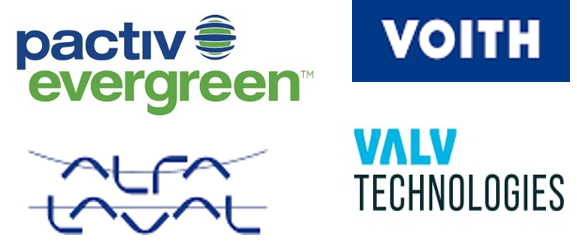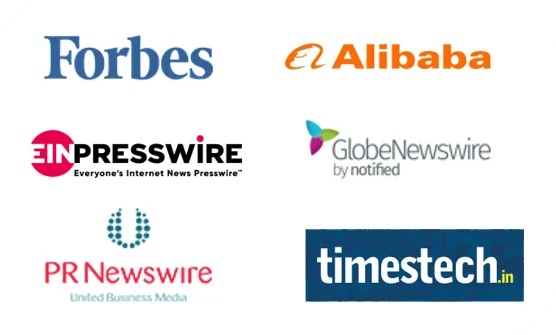Market Overview:
"The global paint sprayer market was valued at US$ 1.3 billion in 2024 and is expected to register a CAGR of 4.9% over the forecast period and reach US$ 2.0 billion in 2033."
|
Report Attributes |
Details |
|
Base Year |
2024 |
|
Forecast Years |
2025-2033 |
|
Historical Years |
2021-2024 |
|
Paint Sprayer Market Growth Rate (2025-2033) |
4.9% |
A paint sprayer is a versatile tool used in various industries and applications for efficient and uniform paint application. It utilizes compressed air or high-pressure systems to atomize paint into a fine mist, resulting in a smooth and professional finish. Paint sprayers find widespread use in automotive, construction, furniture, and manufacturing industries, as well as for home improvement projects. The primary factors driving the demand and preference for paint sprayers include time efficiency, cost savings, and superior finish quality. These systems enable faster paint application times, reduce wastage, and ensure even coverage or coat, making them a preferred choice for professionals and DIY enthusiasts alike.
The global paint sprayer market is registering significant revenue growth due to increasing consumption in industries such as construction, automotive, and furniture, among others. Advancements in technology have led to the development of more innovative paint sprayers offering superior performance and efficiency. Initiatives promoting environmental compliance and sustainability are also driving demand.
Paint Sprayer Market Trends & Drivers:
Increasing Construction Activities: The booming construction industry, particularly in emerging economies, has created substantial demand for paint sprayers. Rapid urbanization and infrastructure development projects are also driving need for efficient and time-saving painting solutions. Increasing number of infrastructure development and smart city projects is also a key factor expected to continue to support revenue growth of the market over the forecast period.
Growing Automotive Sector: Rapid expansion across the automotive industry, coupled with rising consumer expectations for high-quality finishes, has been boosting paint sprayer demand. These tools offer precision, speed, and a uniform coat of paint, meeting the industry's stringent requirements.
Advancements in Technology: Technological advancements have led to the development of advanced paint sprayers with features like adjustable pressure settings, digital controls, and improved spray patterns. These advancements enhance productivity, efficiency, and overall performance, attracting customers and driving market growth.
Increasing DIY Culture: The Do-It-Yourself (DIY) trend continues to gain popularity and traction, with more individuals engaging in home improvement projects and painting and art hobbies. Paint sprayers enable DIY enthusiasts to achieve professional-level results, and demand for compact, user-friendly, and affordable paint sprayers has risen in the recent past.
Emphasis on Environmental Compliance: Increasing environmental concerns is driving rising emphasis on eco-friendly and sustainable painting solutions. Paint sprayers offer benefits such as reduced paint wastage, lower emissions, and efficient use of resources, thus aligning with environmental compliance initiatives.
Paint Sprayer Market Restraining Factors:
High Initial Investment: Paint sprayers can be expensive, especially advanced models with cutting-edge features. The high initial investment required to purchase these tools may deter some potential customers, particularly small businesses or DIY enthusiasts on a limited budget.
Lack of Skilled Workforce: Operating paint sprayers effectively requires specific skills and expertise. The shortage of skilled workforce capable of handling paint sprayers may restrict the market growth, as businesses may face challenges in finding trained professionals or incur additional costs for training employees.
Maintenance and Repair Costs: Paint sprayers require regular maintenance to ensure optimal performance. Additionally, repairs and replacement parts can be costly, especially for complex models. These ongoing costs can deter some customers from investing in paint sprayers, and this can impact market revenue growth.
Volatility in Raw Material Prices: The prices of raw materials used in paint production, such as resins and pigments, can be volatile. Fluctuations in raw material costs can directly impact the overall cost of paint sprayers, making them less affordable for customers and negatively affecting market growth.
Stringent Environmental Regulations: While environmental compliance is considered a positive factor, stringent regulations can pose challenges for the paint sprayer market. Compliance with strict environmental standards may require additional investments in eco-friendly technologies, which can increase the cost of paint sprayers and impact market growth.
Paint Sprayer Market Opportunities:
Product Innovation and Differentiation: Companies can focus on developing innovative paint sprayers with unique features and functionalities to differentiate themselves in the market. This can attract customers looking for specialized paint application solutions and result in increased sales and market share.
Expansion into Emerging Markets: Emerging economies present untapped markets with growing construction and automotive sectors. Companies can expand their presence in these regions by establishing distribution networks, partnering with local businesses, and offering tailored products and services to cater to specific market needs.
Rental and Leasing Services: Offering paint sprayers on a rental or leasing basis can provide an additional revenue stream. This allows customers, especially small businesses or individuals with occasional painting needs, to access high-quality paint sprayers without making a significant upfront investment.
After-sales Services and Maintenance Contracts: Providing comprehensive after-sales services, such as maintenance, repairs, and replacement parts, can generate additional revenue. Offering extended warranty programs or maintenance contracts can create a recurring revenue stream and enhance customer loyalty.
Digital Marketing and E-commerce: Embracing digital marketing strategies and establishing an online presence can significantly expand the customer reach. Companies can leverage e-commerce platforms to sell paint sprayers directly to customers, making the buying process more convenient and accessible, thereby boosting sales and revenue.
Paint Sprayer Market Segmentation:
By Product Type:
- Airless Paint Sprayers
- HVLP (High Volume Low Pressure) Paint Sprayers
- Electrostatic Paint Sprayers
- Other Paint Sprayers
By Technology:
- Manual Paint Sprayers
- Automatic Paint Sprayers
By Power Source:
- Electric Paint Sprayers
- Pneumatic Paint Sprayers
- Gasoline-powered Paint Sprayers
- Battery-powered Paint Sprayers
By End-Use Industry:
- Construction
- Automotive
- Furniture
- Manufacturing
- Aerospace
- Marine
- Others
By Sales Channel:
- Direct Sales
- Distributor/Wholesaler
- E-commerce
- Retail Stores
By Paint Type:
- Water-based Paint
- Solvent-based Paint
- Powder Coatings
- Others
By Capacity:
- Low-Capacity Paint Sprayers
- Medium Capacity Paint Sprayers
- High-Capacity Paint Sprayers
- Application:
- Residential
- Commercial
- Industrial
By User:
- Professional Users
- DIY (Do-it-yourself) Users
- Price Range:
- Economy Range Paint Sprayers
- Mid-Range Paint Sprayers
- Premium Range Paint Sprayers
By Accessories:
- Spray Guns
- Nozzles
- Hoses
- Pressure Tanks
- Filters
- Others
By End-User Skill Level:
- Beginner
- Intermediate
- Expert
Paint Sprayer Market, By Region:
North America:
- United States
- Canada
Europe:
- Germany
- United Kingdom
- France
- Italy
- Spain
- Russia
- Poland
- BENELUX
- NORDIC
- Rest of Europe
Asia Pacific:
- China
- Japan
- India
- South Korea
- ASEAN
- Australia & New Zealand
- Rest of Asia Pacific
Latin America:
- Brazil
- Mexico
- Argentina
- Rest of Latin America
Middle East & Africa:
- Saudi Arabia
- South Africa
- United Arab Emirates
- Israel
- Rest of MEA
North America market share incline is supported by substantially large revenue share contribution largely from the United States and secondly from Canada, owing to strong demand for paint sprayers in these countries. Robust construction and automotive sectors, coupled with consumer preference for high-quality finishes, and government initiatives promoting infrastructure development and sustainability are other key factors further supporting revenue growth.
Europe market share increase is driven by major revenue share contribution from markets in Germany, France, and the United Kingdom respectively. Focus on energy-efficient buildings and strict environmental regulations, coupled with technological advancements, industry collaborations, and government incentives are contributing significantly to revenue growth of the Europe market.
Asia Pacific revenue growth is driven by rapid contribution from China, India, and Japan. Rapid urbanization, infrastructure development, and a booming automotive industry are factors driving rapid demand for paint sprayers. Government initiatives to promote construction activities, foreign investments, and favourable trade policies are further expected to support market growth and revenue.
Latin America market share growth is driven by revenue contribution from countries such as Brazil and Mexico. Increasing construction projects, rising disposable income, and increasing number of individuals opening small scale businesses and paint shops and vehicle body repair centres are factors driving product demand. Government initiatives focusing on infrastructure development, housing schemes, and economic growth are also contributing to market expansion.
The Middle East and Africa market growth is driven by rising demand for paint sprayers in the UAE, Saudi Arabia, and South Africa. Infrastructure development projects, urbanization, and the construction of commercial and residential buildings are driving demand. Government initiatives promoting economic diversification and sustainable development are also supporting market growth.
Leading Companies in Paint Sprayer Market & Competitive Landscape:
The global paint sprayer market landscape is highly competitive with several key players focusing on leveraging maximum market share. Companies such as Graco Inc., Wagner Spraytech, SATA GmbH & Co. KG, and Fuji Spray dominate the market. Intense competition drives innovation, product development, and strategic partnerships, enhancing customer choices and driving market growth.
Company List:
- Graco Inc.
- Wagner Spraytech
- SATA GmbH & Co. KG
- Fuji Spray
- Kremlin Rexson
- Titan Tool Inc.
- Anest Iwata
- EXEL Industries
- 3M Company
- C.A. Technologies
- Binks
- Devilbiss
- ASM
- Walther Pilot
- H.V.L.P. Srl
Research Scope
|
Report Metric |
Report Details |
|
Paint Sprayer Market size available for the years |
2021-2033 |
|
Base Year |
2024 |
|
Forecast Period |
2025-2033 |
|
Compound Annual Growth Rate (CAGR) |
4.9% |
|
Segment covered |
By Product Type, Technology, Power Source, End-use Industry, Sales Channel, Paint Type, Capacity, Application, User, Price Range, Accessories, End-user Skill Level, And Regions and Countries |
|
Regions Covered |
North America: The U.S. & Canada Latin America: Brazil, Mexico, Argentina, & Rest of Latin America Asia Pacific: China, India, Japan, Australia & New Zealand, ASEAN, & Rest of Asia Pacific Europe: Germany, The U.K., France, Spain, Italy, Russia, Poland, BENELUX, NORDIC, & Rest of Europe The Middle East & Africa: Saudi Arabia, United Arab Emirates, South Africa, Egypt, Israel, and Rest of MEA |
|
Fastest Growing Country in Europe |
Germany |
|
Largest Market in Asia Pacific |
China |
|
Key Players |
Graco Inc., Wagner Spraytech, SATA GmbH & Co. KG, Fuji Spray, Kremlin Rexson, Titan Tool Inc., Anest Iwata, EXEL Industries, 3M Company, C.A. Technologies, Binks, Devilbiss, ASM, Walther Pilot, H.V.L.P. Srl, among others. |
Frequently Asked Question
What are some key factors driving revenue growth of the global paint sprayer market?
Some key factors driving market revenue growth include increasing construction activities, growing automotive sector, technological advancements in paint sprayers, rising popularity of DIY culture, and emphasis on environmental compliance.
Which end-use industries contribute significantly to the demand for paint sprayers?
The construction, automotive, furniture, manufacturing, aerospace, and marine industries are among the key end-use industries that drive the demand for paint sprayers.
What are the different types of paint sprayers available in the market?
The market offers various types of paint sprayers, including airless paint sprayers, high-volume low-pressure paint sprayers, electrostatic paint sprayers, and other specialized paint sprayers.
What are the major sales channels for paint sprayers?
Paint sprayers are sold through various channels, including direct sales, distributors/wholesalers, e-commerce platforms, and retail stores.
How do technological advancements impact the paint sprayer market?
Technological advancements lead to the development of innovative paint sprayers with features like adjustable pressure settings, digital controls, and improved spray patterns. These advancements enhance productivity, efficiency, and overall performance, driving market growth and customer preference.

